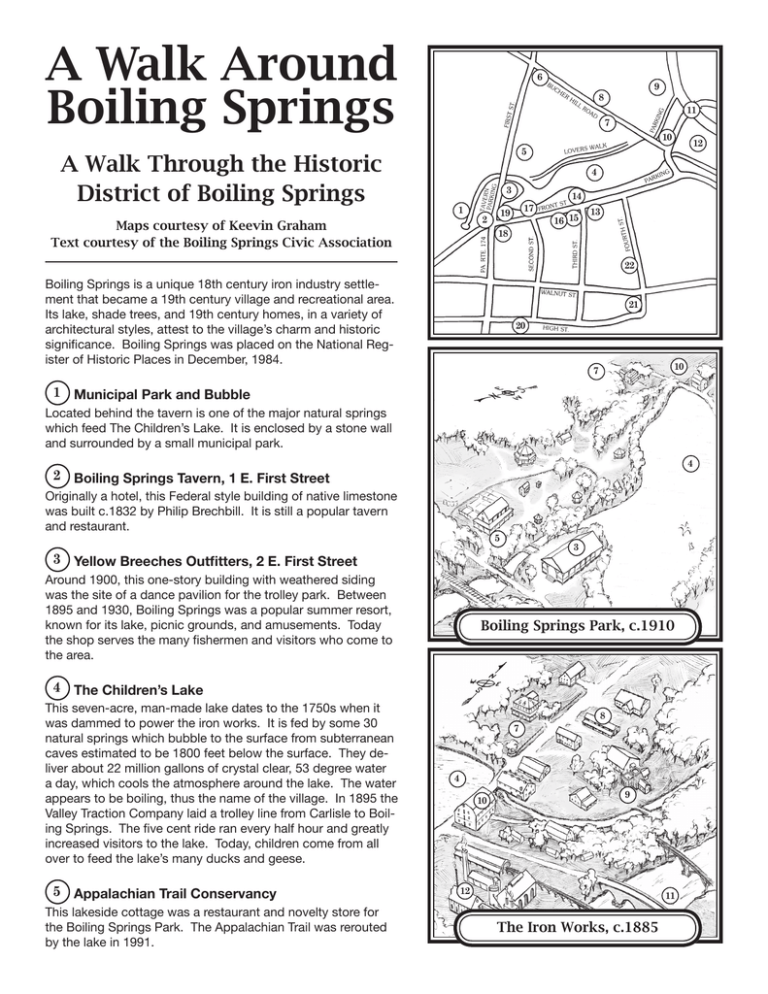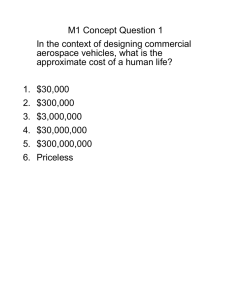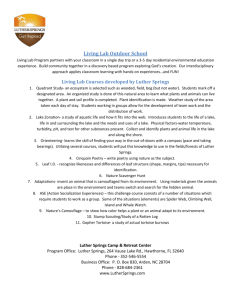A Walk Around Boiling Springs
advertisement

A Walk Around Boiling Springs A Walk Through the Historic District of Boiling Springs 6 9 8 11 7 10 12 5 4 3 1 Maps courtesy of Keevin Graham Text courtesy of the Boiling Springs Civic Association 2 14 17 19 16 15 13 18 22 Boiling Springs is a unique 18th century iron industry settlement that became a 19th century village and recreational area. Its lake, shade trees, and 19th century homes, in a variety of architectural styles, attest to the village’s charm and historic significance. Boiling Springs was placed on the National Register of Historic Places in December, 1984. 21 20 10 7 1 Municipal Park and Bubble Located behind the tavern is one of the major natural springs which feed The Children’s Lake. It is enclosed by a stone wall and surrounded by a small municipal park. 4 2 Boiling Springs Tavern, 1 E. First Street Originally a hotel, this Federal style building of native limestone was built c.1832 by Philip Brechbill. It is still a popular tavern and restaurant. 5 3 3 Yellow Breeches Outfitters, 2 E. First Street Around 1900, this one-story building with weathered siding was the site of a dance pavilion for the trolley park. Between 1895 and 1930, Boiling Springs was a popular summer resort, known for its lake, picnic grounds, and amusements. Today the shop serves the many fishermen and visitors who come to the area. Boiling Springs Park, c.1910 4 The Children’s Lake This seven-acre, man-made lake dates to the 1750s when it was dammed to power the iron works. It is fed by some 30 natural springs which bubble to the surface from subterranean caves estimated to be 1800 feet below the surface. They deliver about 22 million gallons of crystal clear, 53 degree water a day, which cools the atmosphere around the lake. The water appears to be boiling, thus the name of the village. In 1895 the Valley Traction Company laid a trolley line from Carlisle to Boiling Springs. The five cent ride ran every half hour and greatly increased visitors to the lake. Today, children come from all over to feed the lake’s many ducks and geese. 5 Appalachian Trail Conservancy This lakeside cottage was a restaurant and novelty store for the Boiling Springs Park. The Appalachian Trail was rerouted by the lake in 1991. 8 7 4 10 9 12 11 The Iron Works, c.1885 6 Ege Cemetery Michael Ege built a family burial plot in 1786. The lot is enclosed by a stone wall and the entrance is through an iron door which was made at the iron furnace. Fifteen people are buried here, including Michael’s mother, Catharine. 7 Ege-Bucher Mansion Set on a terraced hill overlooking the lake, the sixteen room mansion was built c.1780 by Michael Ege, ironmaster of the Carlisle Iron Works. Originally a 2 ½ story of Georgian design, it was later modified. The Bucher Family, who called the home “Highland Terrace,” added the colonial pedimented portico with columns c.1930. The inside of the house has beautifully crafted woodwork, a magnificent three-story staircase, and other fine architectural details, such as fireplaces with mantles and woodwork extending to the ceiling. 8 Iron Works Stables This low, rectangular limestone building above the forge was built in 1827 as stables for the iron works. It has been converted into apartments. 9 The Iron Furnace This restored blast furnace remains from the Carlisle Iron Works and was built around 1760. The establishment of the iron works in Boiling Springs marks the beginning of industrial development in the Cumberland Valley. The iron works, powered by water from the lake and Yellow Breeches Creek, produced firebacks, stove plates and other ironware. Munitions and ammunition was made here during the Revolutionary War. The area around the furnace is now a municipal park. 10 The Grist Mill The mill was built by Michael Ege about 1784 to provide flour and grain for the iron works. Originally a two-story building, it has undergone many alterations over the years. It was renovated to its present condition after a fire in 1896. The 4 ½ story colonial style structure has a New England gambrel tin roof. The lower two levels are of native limestone with red sandstone with red sandstone quoins. 11 Stone Arch Bridge Ege’s Bridge or the Boiling Springs Bridge is a stone three-arched structure built in 1854 for $2,997.50. 12 Boiling Springs Pools The tallest pool building was built around 1882 to house pumps for the Katherine Furnace complex. The swimming pools were built in 1927 by Gilbert Malcolm, husband of Helen Bucher. This was the first public swimming facility in Cumberland County. 13 The Daniel Kaufman House, 301 Front Street This 2 ½ story, Federal style (with Italianate details) was built c.1880 by Daniel Kaufman. Kaufman was the man responsible for laying out the village of Boiling Springs in 1845. He was also an abolitionist and one of three men in charge of the Underground Railroad station at Boiling Springs. A hiding place for runaway slaves was Island Grove, located on the south side of Yellow Breeches, about half a mile from the village. 14 Boiling Springs State Bank This bank was organized and the $17,500 stone building erected in 1920. It operated until 1938. Around 1960 a framed third story was added. The building is now a private residence. 15 Dr. Houch’s House, 219 Front Street The Queen Anne façade of this c.1870 house makes it a one of a kind in the district. Its most distinctive feature is the third story half-turret with conical roof and balconet. The house is now the “Gelinas Manor Bed & Breakfast.” 16 The Ahl House, 217 Front Street This brick Second Empire style house was built by Reuben Webbert in 1896-70. His daughter, Ida Webbert Ahl, lived here 53 years. The house is 2 ½ stories surmounted by a slate mansard roof and has fourteen rooms. Note its recessed arched double front door. 17 The Dr. Peters House, 106 Front Street This modified Eastern Stick style dwelling was built c.1900 for Dr. Milton Peters, a prominent Boiling Springs physician. It is interesting for its decorative features. 18 Caffé 101, 101 Front Street This Federal brick structure is located on Lot #1 and was the first lot sold in the village. It was purchased by Adam M. Leidich, who had surveyed and laid out the village for Daniel Kaufman. Leidich built this building in 1846 and used part of it as a general store. The building was later used as a post office and drugstore. 19 The Clocktower This native limestone, four-faced clock tower was dedicated on July 4, 1957 to the fallen veterans of Foreign Wars. The memorial to the Korean and Vietnam veterans was dedicated Memorial Day, 1985 by the Veterans of Foreign Wars. 20 The Grange Hall, 107 High Street The farmers of the area organized Grange #18ee in 1920 and constructed this building in 1924. It was a center for social activities (concerts, plays, suppers and lectures) until 1947. 21 Church of the Brethren This late Federal brick gabled church was erected in 1875. It is now the home of “The Village Artisans,” a fine craft and art gallery and studio. 22 Fourth Street United Methodist Church This small, common-bond brick church with gable roof and bell steeple was erected in 1876 and has been in continuous use since then. Decorative details include a pedimented end gable, wheel window and pierced-work verge-board on the entry gable. There are many other houses and building of architectural and historical interest in the village. Walk along First, Second, Third, Fourth, Walnut and High Streets to enjoy the 19th century atmosphere of the Historic District. Buildings of particular interest and their locations are: Front Street: #109 “Anna Brechbill’s House,” c.1848 #111 “The Brandt House,” c.1875 #201 “Brindle’s General Store,” c.1855 #211 “The Richwine House,” 1861 #400 “The Stone House on the Lake,” c.1860 It is believed that the building used recycled stone from other buildings demolished during this period. W. First Street #207 #208 “Dr. May’s House,” 1876 “Dr. Mower’s House,” c.1850 Third Street #109 #119 #121 #124 #125 “The O.U.A.M. Hall,” 1907 “Squire Lehman’s House,” c.1890 “Fletcher’s Store,” 1876 “The Wise House,” c.1875 The garage to the rear of this house was the town’s first firehouse from 1910-1922 “The J.C. Lehman House,” c.1875 Fourth Street #112 “The Filler House,” c.1880


